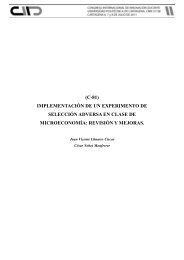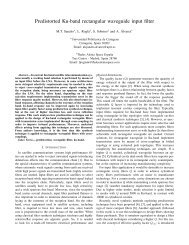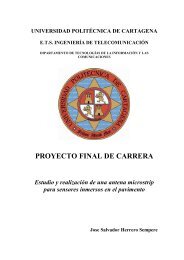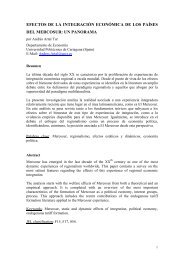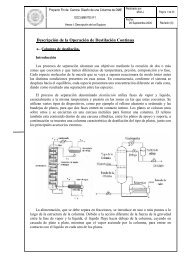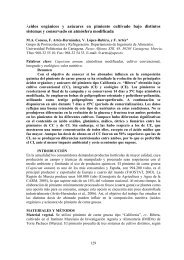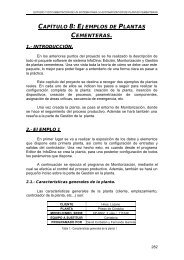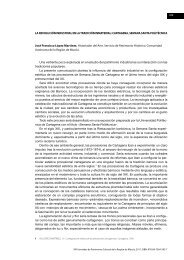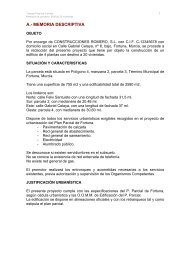- Page 1: Universidad Politécnica de Cartage
- Page 5 and 6: The results of the research develop
- Page 7 and 8: Índice General Agradecimientos Int
- Page 9 and 10: 5.2 Simulaciones del modelo. Modeli
- Page 11 and 12: Introducción 1 Introducción Intro
- Page 13 and 14: Introducción la hora de inspirar m
- Page 15 and 16: Introducción 1. Análisis experime
- Page 17 and 18: Introducción 3.7 Transferencia tec
- Page 19 and 20: Introducción presentan objetos de
- Page 21 and 22: Capitulo 1. El Movimiento de Agarre
- Page 23 and 24: Capitulo 1. El Movimiento de Agarre
- Page 25 and 26: Capitulo 1. El Movimiento de Agarre
- Page 27 and 28: Capitulo 1. El Movimiento de Agarre
- Page 29 and 30: Capitulo 1. El Movimiento de Agarre
- Page 31 and 32: Capitulo 1. El Movimiento de Agarre
- Page 33 and 34: Capitulo 1. El Movimiento de Agarre
- Page 35 and 36: Capitulo 1. El Movimiento de Agarre
- Page 37 and 38: Capitulo 1. El Movimiento de Agarre
- Page 39 and 40: Capitulo 1. El Movimiento de Agarre
- Page 41 and 42: Capitulo 1. El Movimiento de Agarre
- Page 43 and 44: Capitulo 1. El Movimiento de Agarre
- Page 45 and 46: Capitulo 1. El Movimiento de Agarre
- Page 47 and 48: Capitulo 1. El Movimiento de Agarre
- Page 49 and 50: Capitulo 1. El Movimiento de Agarre
- Page 51 and 52: Capitulo 1. El Movimiento de Agarre
- Page 53 and 54:
Capitulo 2. Modelos Computacionales
- Page 55 and 56:
Capitulo 2. Modelos Computacionales
- Page 57 and 58:
Capitulo 2. Modelos Computacionales
- Page 59 and 60:
Capitulo 2. Modelos Computacionales
- Page 61 and 62:
Capitulo 2. Modelos Computacionales
- Page 63 and 64:
Capitulo 2. Modelos Computacionales
- Page 65 and 66:
Capitulo 2. Modelos Computacionales
- Page 67 and 68:
Capitulo 2. Modelos Computacionales
- Page 69 and 70:
Capitulo 2. Modelos Computacionales
- Page 71 and 72:
Capitulo 2. Modelos Computacionales
- Page 73 and 74:
Capitulo 2. Modelos Computacionales
- Page 75 and 76:
Capitulo 2. Modelos Computacionales
- Page 77 and 78:
Capitulo 2. Modelos Computacionales
- Page 79 and 80:
Capitulo 2. Modelos Computacionales
- Page 81 and 82:
Capitulo 2. Modelos Computacionales
- Page 83 and 84:
Capitulo 2. Modelos Computacionales
- Page 85 and 86:
Capitulo 2. Modelos Computacionales
- Page 87 and 88:
Capitulo 2. Modelos Computacionales
- Page 89 and 90:
Capitulo 2. Modelos Computacionales
- Page 91 and 92:
Capitulo 2. Modelos Computacionales
- Page 93 and 94:
Capitulo 2. Modelos Computacionales
- Page 95 and 96:
Capitulo 2. Modelos Computacionales
- Page 97 and 98:
Capitulo 3. El Agarre en la EP. Mod
- Page 99 and 100:
Capitulo 3. El Agarre en la EP. Mod
- Page 101 and 102:
Capitulo 3. El Agarre en la EP. Mod
- Page 103 and 104:
Capitulo 3. El Agarre en la EP. Mod
- Page 105 and 106:
Capitulo 3. El Agarre en la EP. Mod
- Page 107 and 108:
Capitulo 3. El Agarre en la EP. Mod
- Page 109 and 110:
Capitulo 3. El Agarre en la EP. Mod
- Page 111 and 112:
Capitulo 3. El Agarre en la EP. Mod
- Page 113 and 114:
Capitulo 3. El Agarre en la EP. Mod
- Page 115 and 116:
Capitulo 3. El Agarre en la EP. Mod
- Page 117 and 118:
Capitulo 3. El Agarre en la EP. Mod
- Page 119 and 120:
Capitulo 3. El Agarre en la EP. Mod
- Page 121 and 122:
Capitulo 3. El Agarre en la EP. Mod
- Page 123 and 124:
Capitulo 3. El Agarre en la EP. Mod
- Page 125 and 126:
Capitulo 3. El Agarre en la EP. Mod
- Page 127 and 128:
Capitulo 3. El Agarre en la EP. Mod
- Page 129 and 130:
Capitulo 3. El Agarre en la EP. Mod
- Page 131 and 132:
Capitulo 3. El Agarre en la EP. Mod
- Page 133 and 134:
Capitulo 3. El Agarre en la EP. Mod
- Page 135 and 136:
Capitulo 3. El Agarre en la EP. Mod
- Page 137 and 138:
Capitulo 3. El Agarre en la EP. Mod
- Page 139 and 140:
Capitulo 3. El Agarre en la EP. Mod
- Page 141 and 142:
Capitulo 3. El Agarre en la EP. Mod
- Page 143 and 144:
Capitulo 3. El Agarre en la EP. Mod
- Page 145 and 146:
Capitulo 3. El Agarre en la EP. Mod
- Page 147 and 148:
Capitulo 3. El Agarre en la EP. Mod
- Page 149 and 150:
Capitulo 3. El Agarre en la EP. Mod
- Page 151 and 152:
Capitulo 3. El Agarre en la EP. Mod
- Page 153 and 154:
Capitulo 3. El Agarre en la EP. Mod
- Page 155 and 156:
Capitulo 4. Modelo Neuronal para la
- Page 157 and 158:
Capitulo 4. Modelo Neuronal para la
- Page 159 and 160:
Capitulo 4. Modelo Neuronal para la
- Page 161 and 162:
Capitulo 4. Modelo Neuronal para la
- Page 163 and 164:
Capitulo 4. Modelo Neuronal para la
- Page 165 and 166:
Capitulo 4. Modelo Neuronal para la
- Page 167 and 168:
Capitulo 4. Modelo Neuronal para la
- Page 169 and 170:
Capitulo 4. Modelo Neuronal para la
- Page 171 and 172:
Capitulo 4. Modelo Neuronal para la
- Page 173 and 174:
Capitulo 4. Modelo Neuronal para la
- Page 175 and 176:
Capitulo 4. Modelo Neuronal para la
- Page 177 and 178:
Capitulo 4. Modelo Neuronal para la
- Page 179 and 180:
Capitulo 4. Modelo Neuronal para la
- Page 181 and 182:
Capitulo 4. Modelo Neuronal para la
- Page 183 and 184:
Capitulo 4. Modelo Neuronal para la
- Page 185 and 186:
Capitulo 4. Modelo Neuronal para la
- Page 187 and 188:
Capitulo 4. Modelo Neuronal para la
- Page 189 and 190:
Capitulo 4. Modelo Neuronal para la
- Page 191 and 192:
Capitulo 4. Modelo Neuronal para la
- Page 193 and 194:
Capitulo 4. Modelo Neuronal para la
- Page 195 and 196:
Capitulo 4. Modelo Neuronal para la
- Page 197 and 198:
Capitulo 4. Modelo Neuronal para la
- Page 199 and 200:
Capitulo 4. Modelo Neuronal para la
- Page 201 and 202:
Capitulo 4. Modelo Neuronal para la
- Page 203 and 204:
Capitulo 4. Modelo Neuronal para la
- Page 205 and 206:
Capitulo 4. Modelo Neuronal para la
- Page 207 and 208:
Capitulo 4. Modelo Neuronal para la
- Page 209 and 210:
Capitulo 4. Modelo Neuronal para la
- Page 211 and 212:
Capitulo 5. Modelo Neuronal para el
- Page 213 and 214:
Capitulo 5. Modelo Neuronal para el
- Page 215 and 216:
Capitulo 5. Modelo Neuronal para el
- Page 217 and 218:
Capitulo 5. Modelo Neuronal para el
- Page 219 and 220:
Capitulo 5. Modelo Neuronal para el
- Page 221 and 222:
Capitulo 5. Modelo Neuronal para el
- Page 223 and 224:
Capitulo 5. Modelo Neuronal para el
- Page 225 and 226:
Capitulo 5. Modelo Neuronal para el
- Page 227 and 228:
Capitulo 5. Modelo Neuronal para el
- Page 229 and 230:
Capitulo 5. Modelo Neuronal para el
- Page 231 and 232:
Capitulo 5. Modelo Neuronal para el
- Page 233 and 234:
Capitulo 5. Modelo Neuronal para el
- Page 235 and 236:
Capitulo 5. Modelo Neuronal para el
- Page 237 and 238:
Capitulo 5. Modelo Neuronal para el
- Page 239 and 240:
Capitulo 5. Modelo Neuronal para el
- Page 241 and 242:
Capitulo 5. Modelo Neuronal para el
- Page 243 and 244:
Capitulo 5. Modelo Neuronal para el
- Page 245 and 246:
Capitulo 5. Modelo Neuronal para el
- Page 247 and 248:
Capitulo 5. Modelo Neuronal para el
- Page 249 and 250:
2.5 cm 3.0 cm 3.5 cm 2 cm Capitulo
- Page 251 and 252:
Capitulo 5. Modelo Neuronal para el
- Page 253 and 254:
Capitulo 5. Modelo Neuronal para el
- Page 255 and 256:
Capitulo 5. Modelo Neuronal para el
- Page 257 and 258:
Capitulo 5. Modelo Neuronal para el
- Page 259 and 260:
Capitulo 5. Modelo Neuronal para el
- Page 261 and 262:
Capitulo 5. Modelo Neuronal para el
- Page 263 and 264:
Capitulo 5. Modelo Neuronal para el
- Page 265 and 266:
R1 HYPBF # 1 HYPBF # 2 R2 AIP VD Mu
- Page 267 and 268:
Capitulo 5. Modelo Neuronal para el
- Page 269 and 270:
Capitulo 6. Implantación de algori
- Page 271 and 272:
Capitulo 6. Implantación de algori
- Page 273 and 274:
Capitulo 6. Implantación de algori
- Page 275 and 276:
Capitulo 6. Implantación de algori
- Page 277 and 278:
Capitulo 6. Implantación de algori
- Page 279 and 280:
Capitulo 6. Implantación de algori
- Page 281 and 282:
Capitulo 6. Implantación de algori
- Page 283 and 284:
Capitulo 7. Conclusiones y Trabajos
- Page 285 and 286:
Capitulo 7. Conclusiones y Trabajos
- Page 287 and 288:
1. Cinemática Directa del brazo ma
- Page 289 and 290:
x 0 l 3 I -M c l 2 z 0 l 1 d θ 4 b
- Page 291 and 292:
Los pesos adaptativos wijk y zijkm
- Page 293 and 294:
Arbib, M.A. (1985a). Schemas for th
- Page 295 and 296:
Castiello, U., Stelmach, G.E., Lieb
- Page 297 and 298:
Fagg, A.H., Arbib, M.A. (1998). Mod
- Page 299 and 300:
Graybiel, A.M. (1997). The basal ga
- Page 301 and 302:
Jaeger, D., Kita, H., Wilson., C.J.
- Page 303 and 304:
Kimura, M., Matsumoto, N., Okahashi
- Page 305 and 306:
Mottet, D., Bootsma, R. J. (2001).
- Page 307 and 308:
Rezzoug, N., Gorce, P. (2001). A Ne
- Page 309 and 310:
Tanee, J., Boussaoud, D., Boyer-Zel



